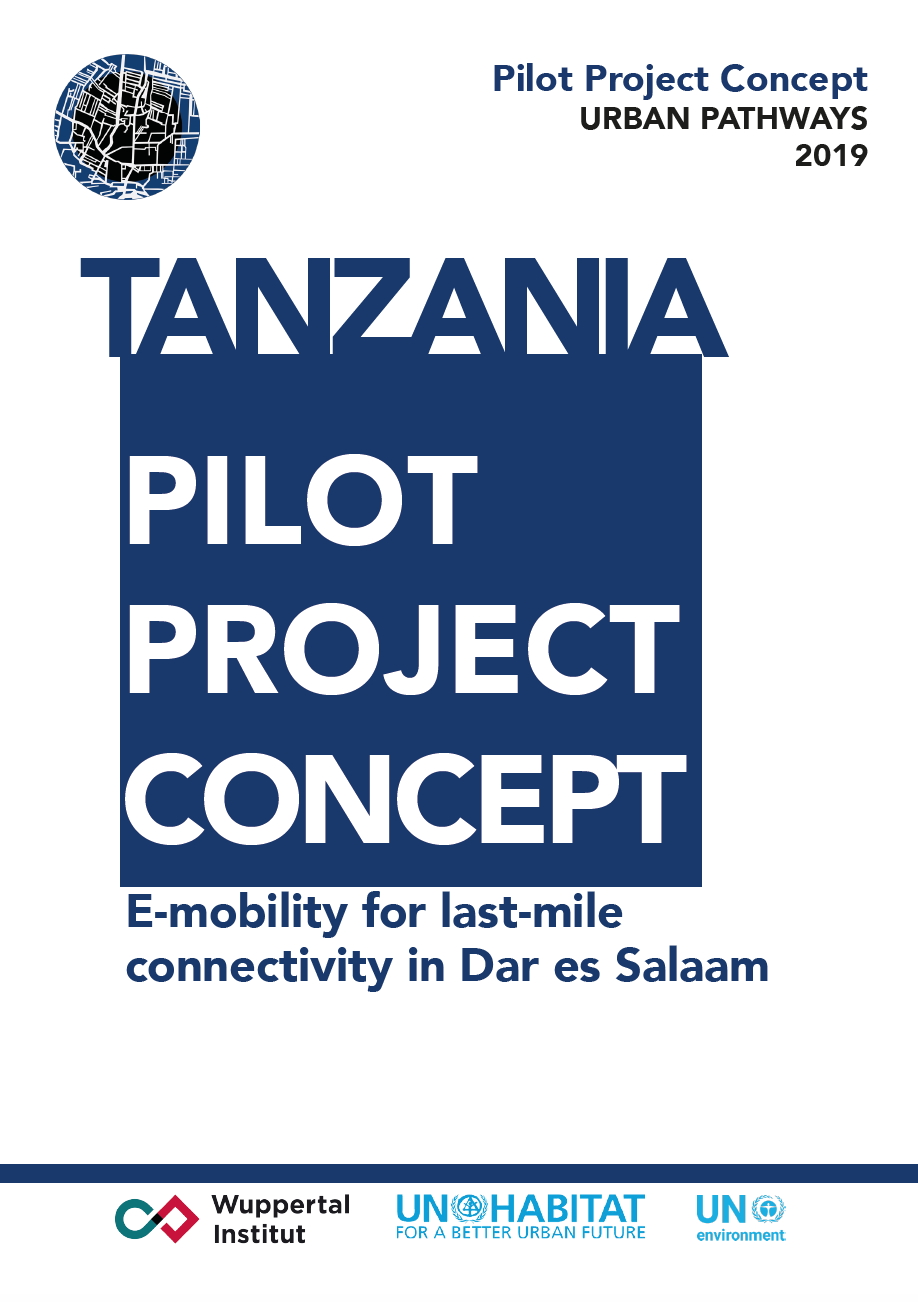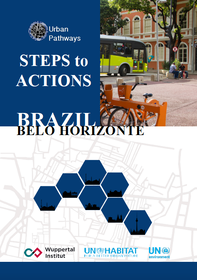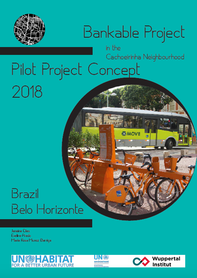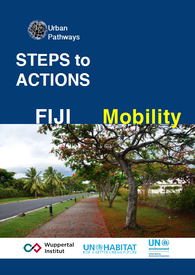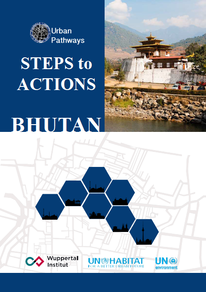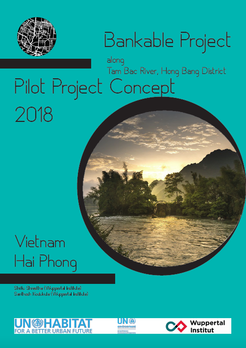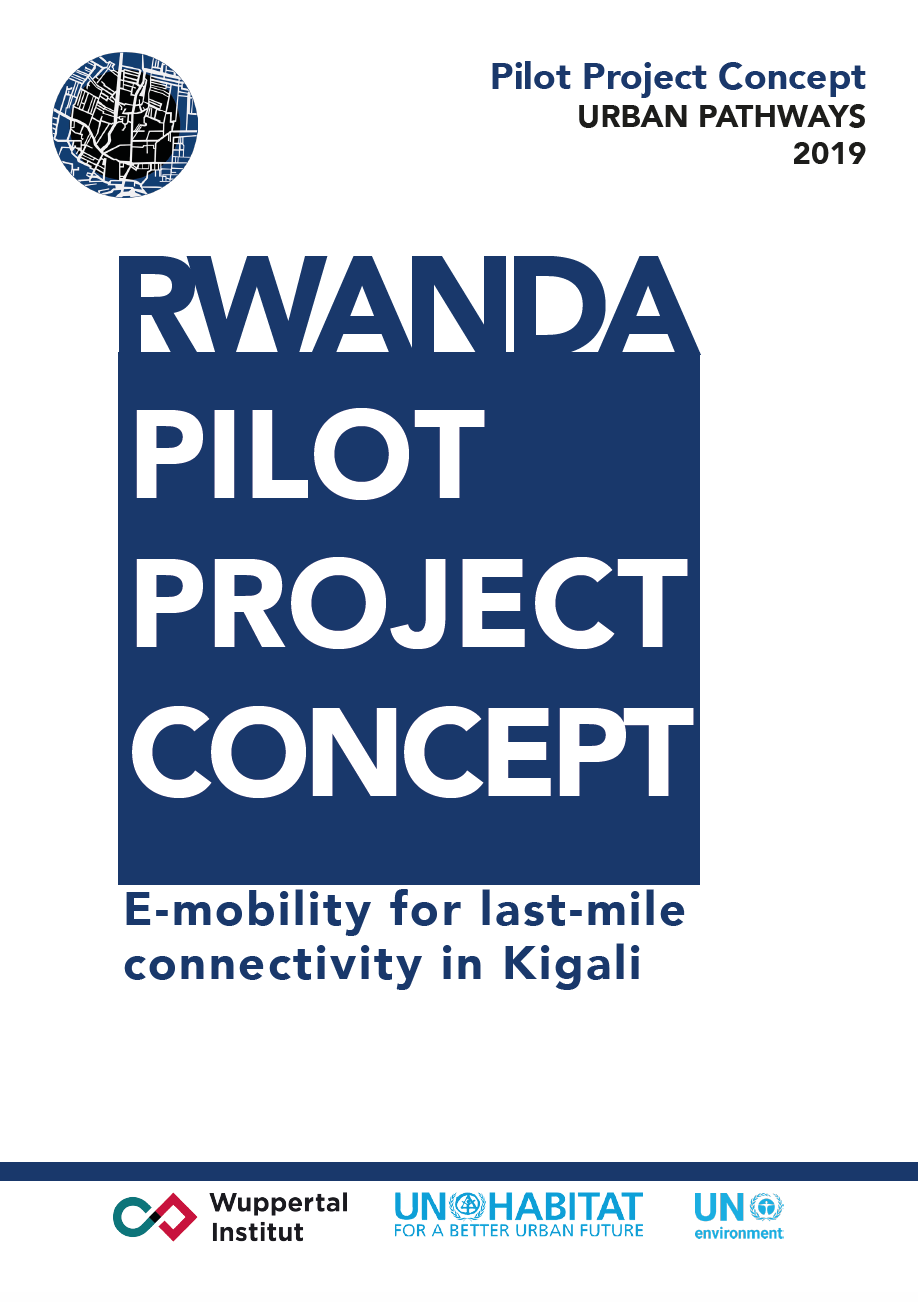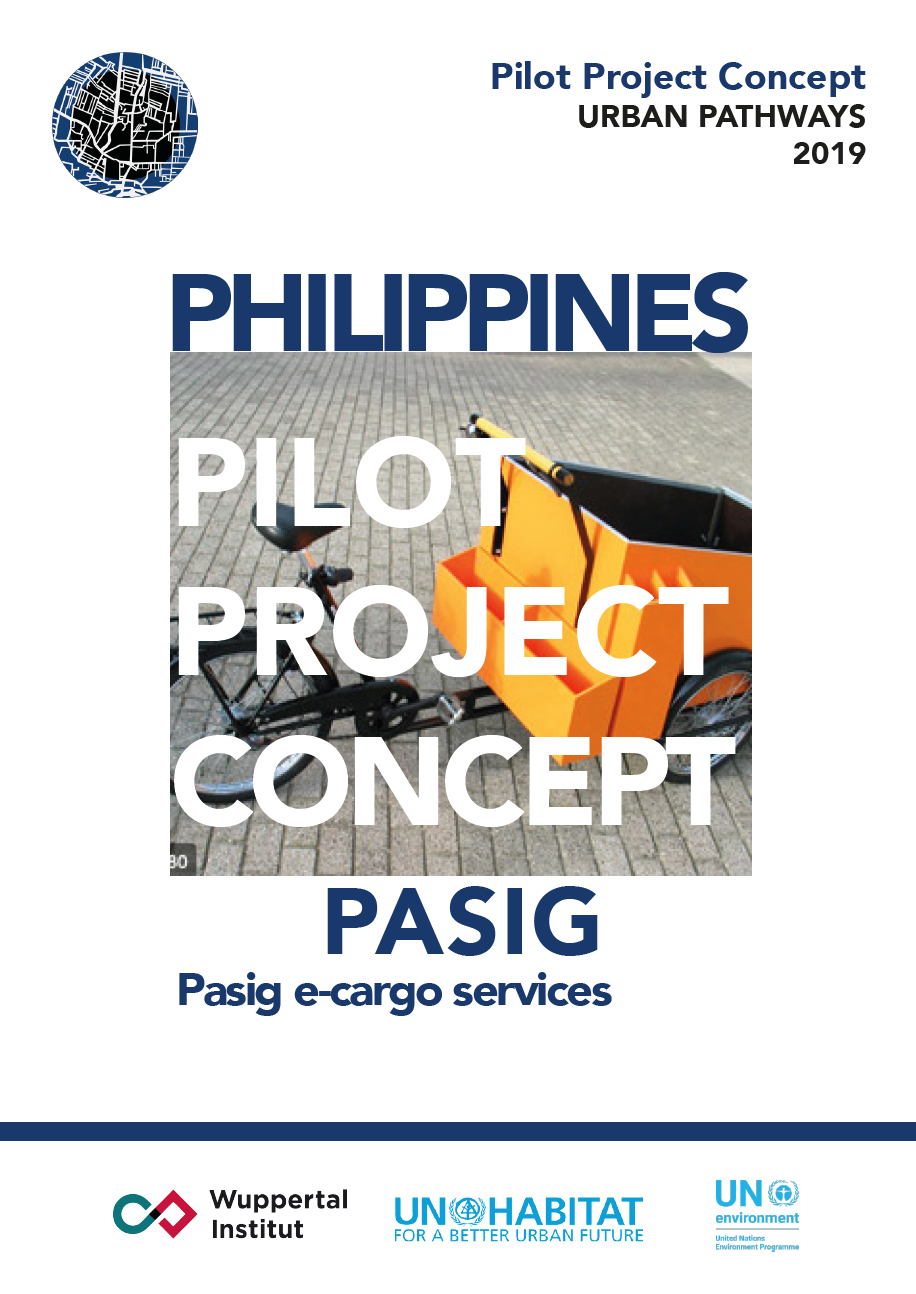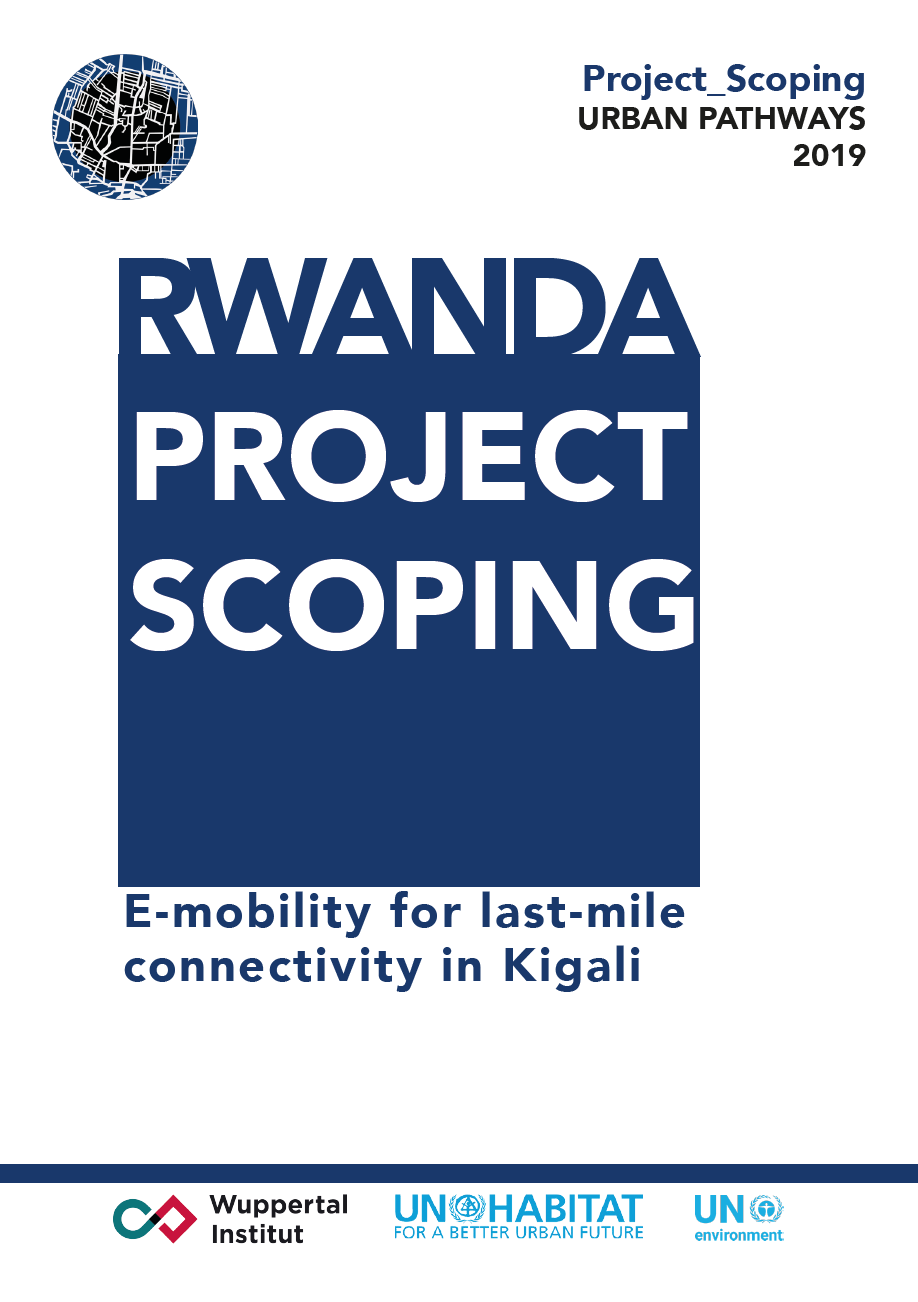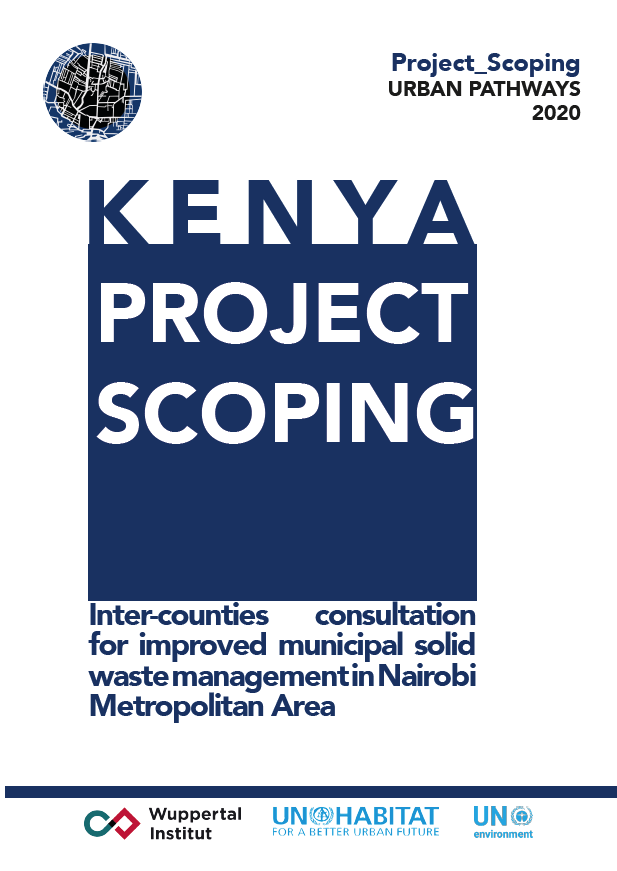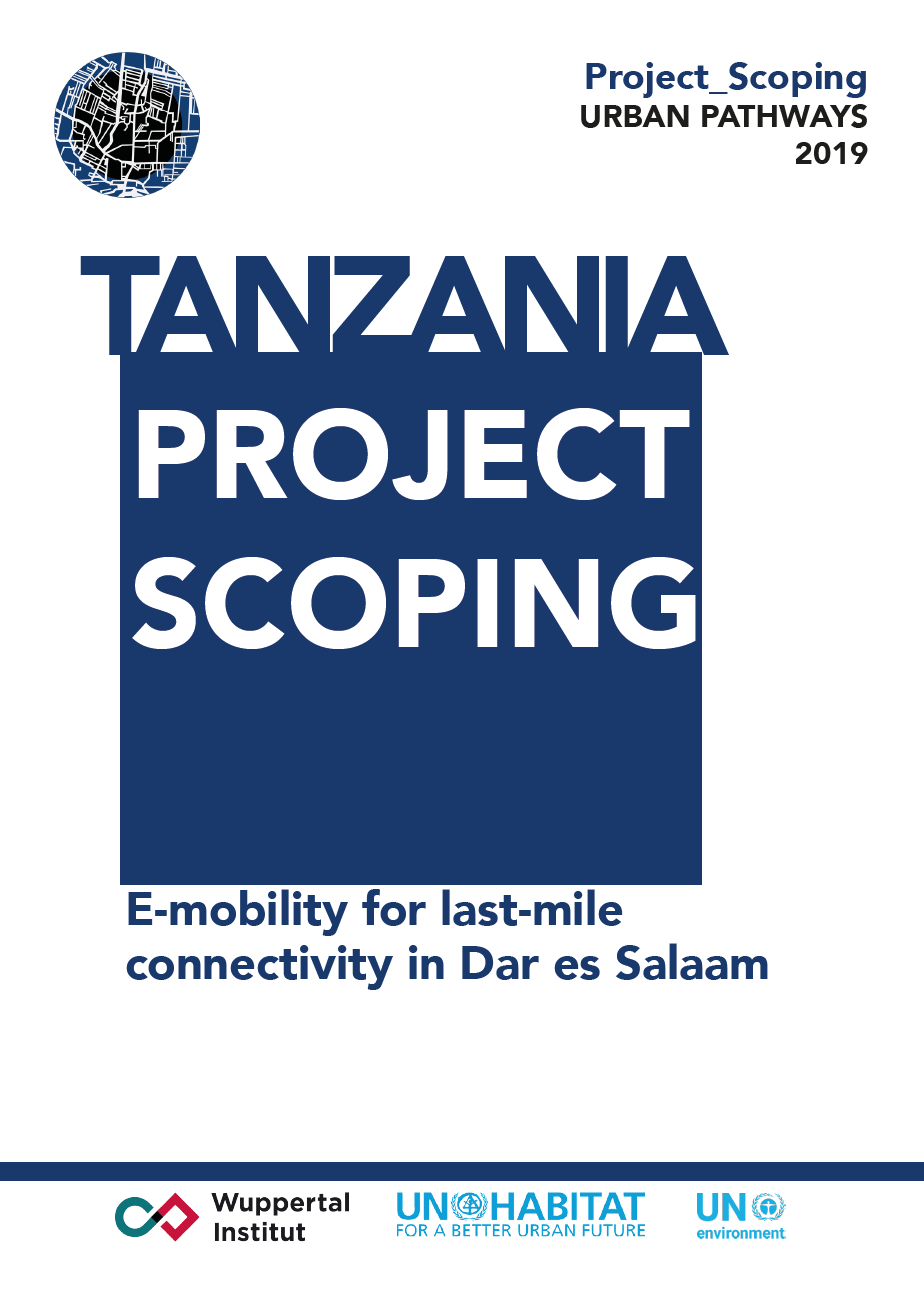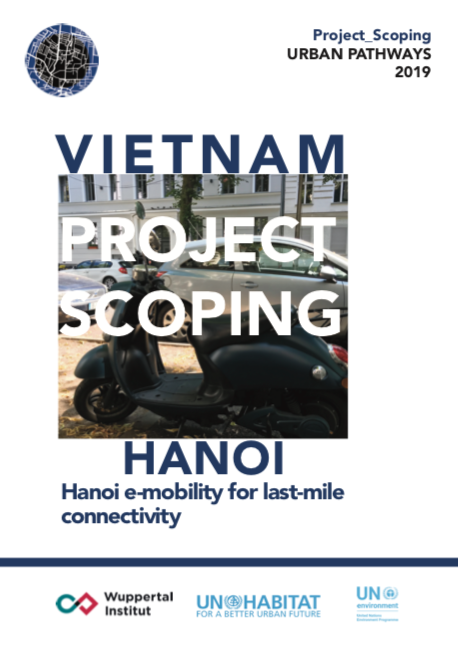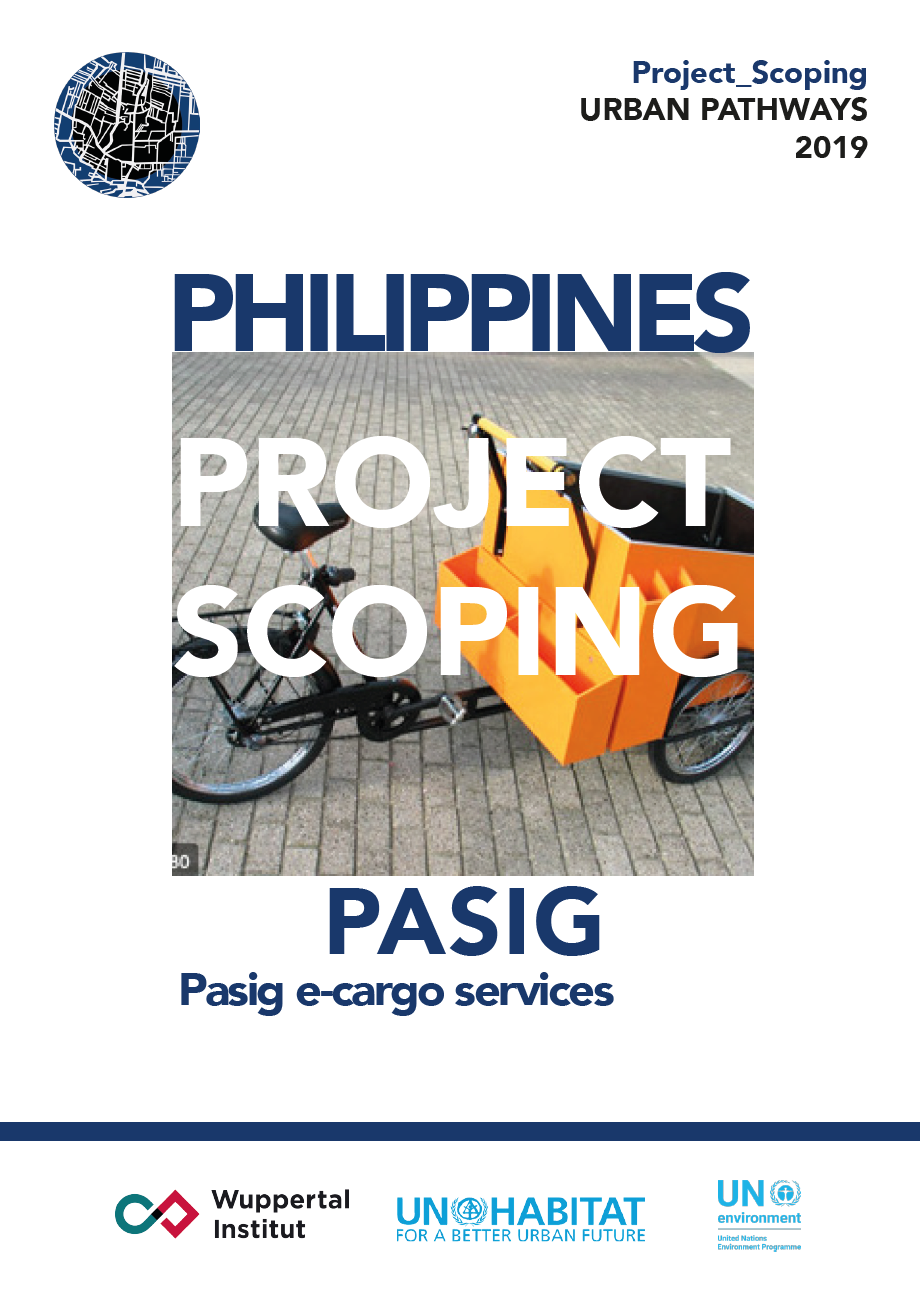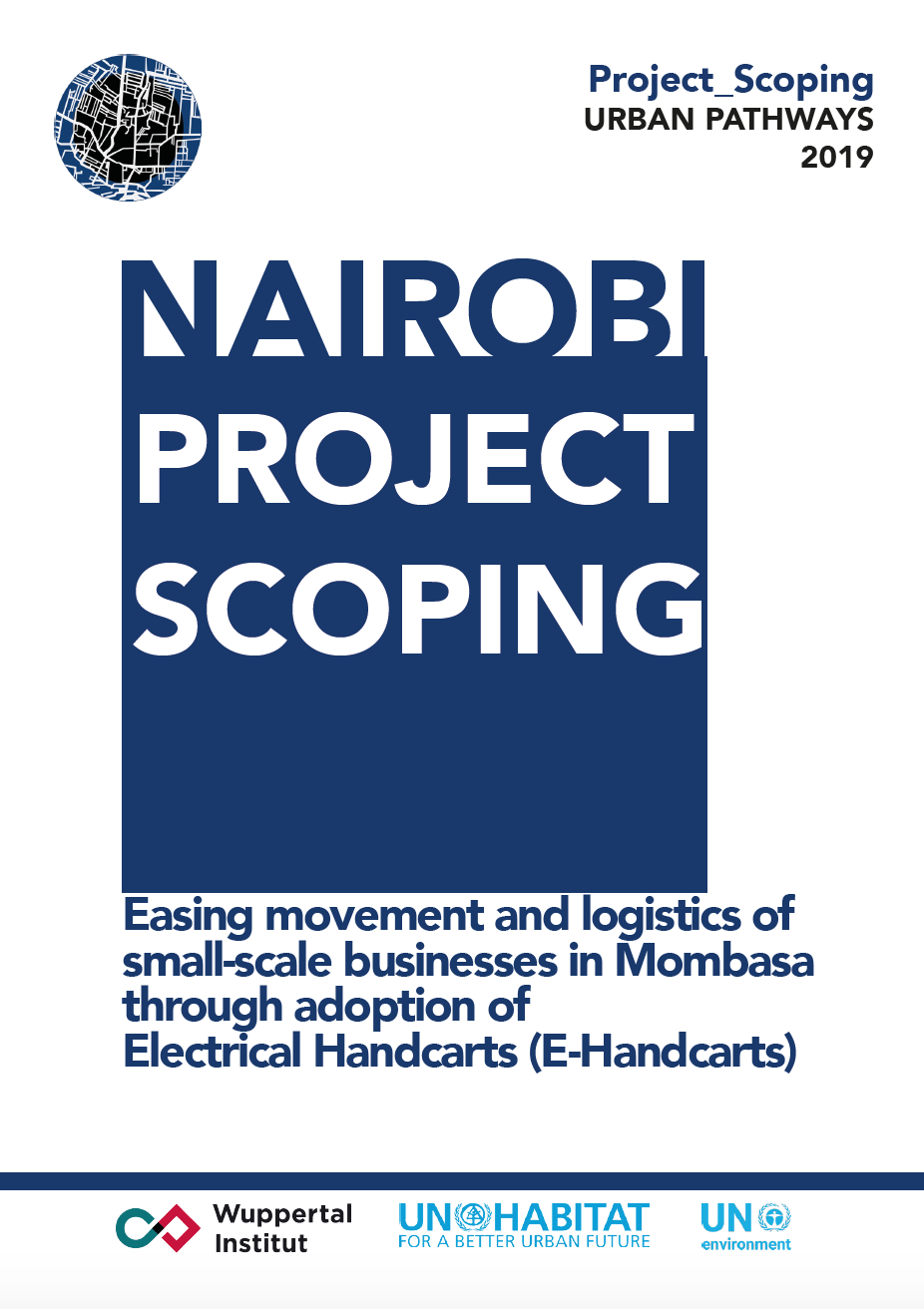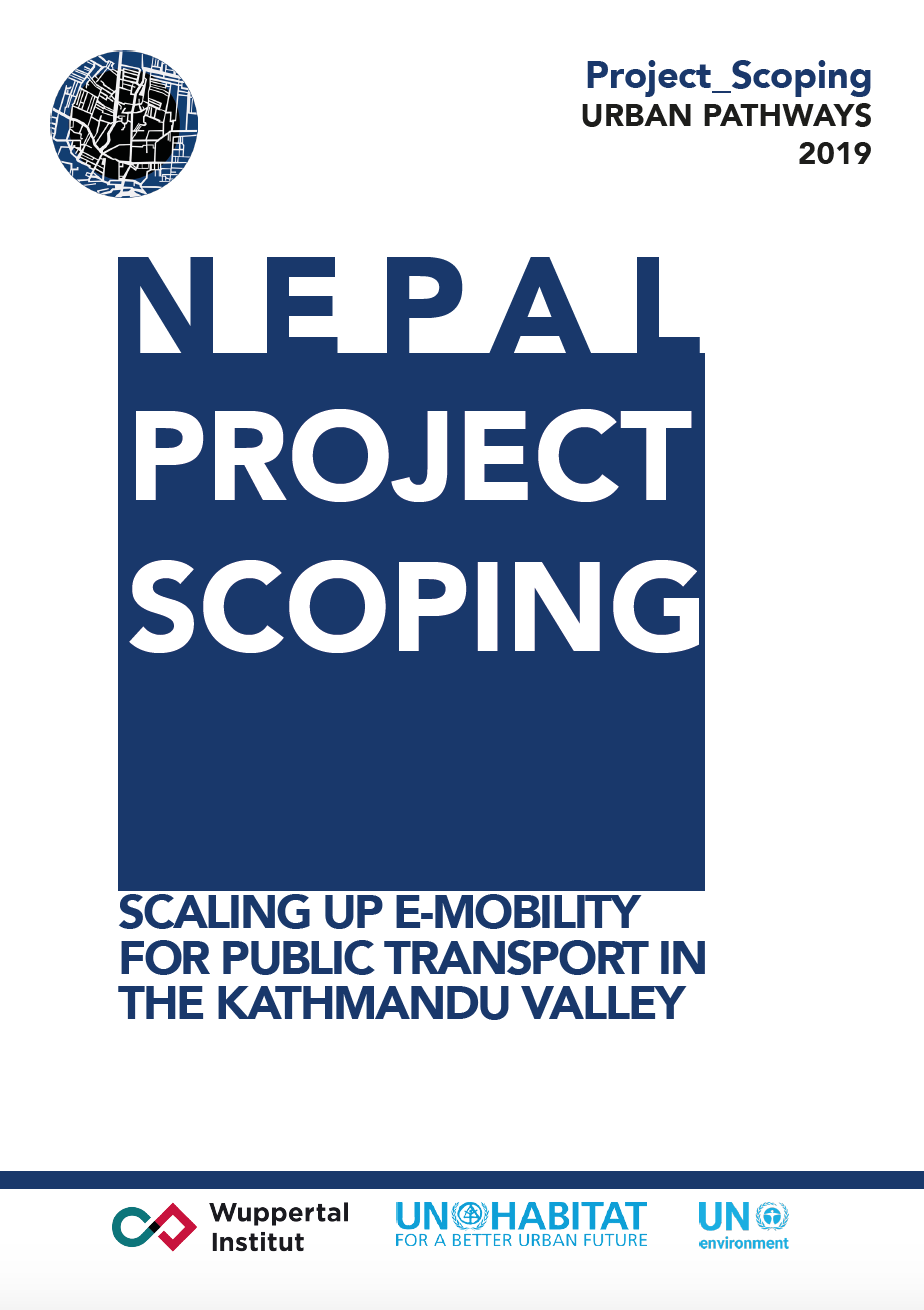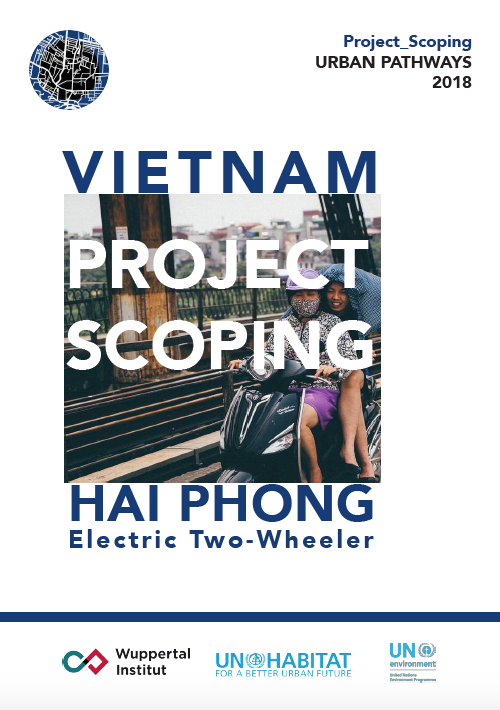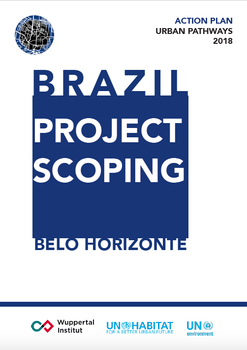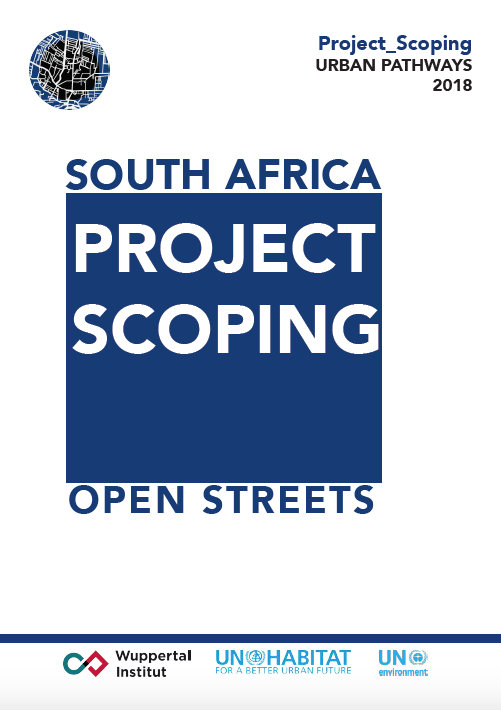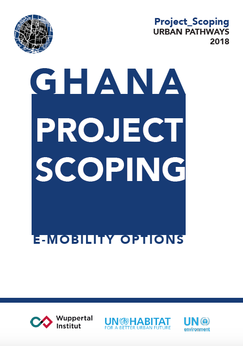|
Policy Papers
|
Project Concepts
|
Funding Solutions
|
|
Bankable Project: Dar es Salaam
Apart from the BRT, public transport predominantly depends on a large fleet of privately-owned minibusses (so-called dala dala), which are often not roadworthy and contribute to congestion and air pollution. In the medium to long term public authorities envisage to phase-out the minibusses on all major roads and replace them with BRT buses. In addition to these bus services, motorised two- and three-wheeler taxis (motor taxis) are very common since mid of the 2000s. They are being used by the population for shorter distances and they enable feeder-connectivity into DART and the paratransit-buses. In areas without process access to buses, motorcycle-taxis are the only publicly available mode of transportation and hence offer a de-facto public transport service filling a gap in the transport system. Despite these obvious benefits for peoples’ mobility, the two- and three-wheelers have contributed to increased pollution in the city. |
|
Bankable Projects: Belo Horizonte
Belo Horizonte has a series of plans (Master Plan, PlanMob-BH, Belo Horizonte – a Smart City, etc.) and policies in place that are reviewed and monitored on a regular basis to help guide the urban development of the city. Belo Horizonte has already made important progress towards sustainability and in the medium and long run Belo Horizonte envisions becoming an example of smart and sustainable urban development for Brazil and Latin America. With this in mind, and because of the favourable technological environment of Belo Horizonte, in 2018 the municipality of Belo Horizonte conceived a new plan, the plan “Belo Horizonte, a smart city”. This plan involves the sustainable use of the city’s resources, such as water and energy, waste management, traffic im-provements, integration between public systems and efficient citizen services through the use of technology, innovation and information systems. With regard to mobility, Belo Horizonte has an innovative Sustainable Urban Mobility Plan, called PlanMob-BH, with comprehensive measures including TOD, BRT and Bike solutions since 2013. By 2030, the plan expects that the measures implemented contribute to reductions of 36% in GHG emissions, 25% in travel time and 19% in transport costs. A process of review and adjust-ment of the plan started in 2016 and was approved in 2017. The plan contains 8 intervention areas, one of which is active mobility composed by the programmes Pedala BH and BH a pé also mentioned in the Smart City plan. The main purpose of these measures is to increase the modal share of bicycle from 0.4% to 6% by 2020 and to improve the public space to create walkability. Project: In this context, Belo Horizonte established a partnership with the city of Bremen, Germany, which will help BH implement a Zone 30 and a bicycle street (Fahrradstrasse). The Zone 30 pilot-project foresees a wide deployment of vertical and horizontal signaling, reallocation and repositioning of parking spaces to provide the reduction of the speed, and, enlargement of sidewalks with the creation of small areas of coexistence for pedestrians with the insertion of urban furniture. Beyond the immediate mobility related issues, Belo Horizonte also recognises these measures as an opportunity to revitalise the downtown area and enhance the quality of life by creating pedestrianised streets and giving the space back to people from cars. Urban Pathways is working towards the first Pilot Project in Belo Horizonte, a Zone 30 in the Cachoeirinha neighbourhood, the first of a series of planned interventions to be implemented in approximately 25 blocks. The first intervention will be in an area of the neighbourhood where the conflict between pedestrians and motor vehicles is critical because of the width of the road, the lack of signage for vehicles, the very narrow sidewalks and the intense flow of children and adolescents due to the existence of two large schools in the area. |
|
Bankable Project: Aguascalientes
This project aims to promote active mobility of adolescents through the improvement of road safety at school areas and places where adolescents walk and cycle. The pilot project will be implemented in five out of the twelve schools analyzed in the first stage, and will be the basis to replicate the project in other schools in Aguascalientes. In the state of Aguascalientes, adolescents aged 12 to 17 years represent 12.3% of the state population (INEGI, 2011). According to the Mexican Youth Institute (IMJUVE, 2017), young people in the country are “the best bet for an integral, fair and lasting development” due to their quantitative representation and their participation as actors of transformation and social renewal. Additionally, adolescence is a stage of physical and emotional changes during the transition from childhood to adulthood, where personality is defined, and independence is shaped (UNICEF, s.d.). The project comprises five phases: research, merging, pilot, assessment and final design and implementation phase. The scope of the project involves the preliminary work, such as feasibility studies, project design and budgeting, until monitoring processes, and promotion of policy design to ensure continuity and scaling up of the project. |
|
Bankable Projects: Thimphu
Waste management is an important issue in Bhutan, mainly in urban areas (from house- hold, commercial and industry) due to increasing quantity of waste and its related emissions. The main challenges in waste management in urban areas in Bhutan (including Thimphu) are illegal dumping of waste (although waste collection services are available) and lack of cooperation in segregation and disposal of waste. Bhutan intends to minimise GHG emission on waste through application of zero waste concept and sustainable waste management practices. It includes en- hancing 3R principles of waste management including conversion of waste into resources, and improving the current system and infrastructure for waste management. The capital city, Thimphu, has piloted evening waste collection services and CCTV surveil- lance to monitor illegal dumping. The availability of not enough waste compost plants and landfill sites are also an issue in Thimphu. To tackle this, the city is planning to explore technology either to make composting faster or to establish a bio-gas plant (which requires waste segregation at the source). Greener Way and Clean City are private companies (outsourced by Thimphu municipality) to manage waste in Thim- phu. In order to improve Bhutan’s solid waste management system, a holistic approach of Integrated Solid waste management in the cities is required and is proposed in this paper. |
|
Bankable Project: Pedestrian Street along Tam bac River
Hong Bang District is Hai Phong socio-economic centre with historical, cultural and recreational importance. The population of this district is 108,101 with a density of 7,471 people/km2. Beside a growing population, in 2017 Hai Phong received approximately 7 million visitors, which included 1 million international visitors. One area of great significance and high touristic attraction is the Hong Bang District’s Tam Bac park, named after the Tam Bac river flowing through the district. Due to tourism flows and commercial activities in the area, vehicular movement is very high with huge risks to pedestrian. Pedestrian safety is also low due to the lack of allocated walking space, further evident with frequent and high volume of traffic accidents. With this in mind, the Tam Bac river front has the potential to be developed into a pedestrian friendly space by reducing vehicular movement, implementing energy efficient street lighting, and improving waste management. Hence, Hai Phong city plans to develop a project to redevelop the area along the Tam Bac river and Tam Bac Park to prioritise pedestrians and create an amiable public space for the citizens and the environment. |
|
Bankable Project: Kochi
The State of Kerala which includes the city of Kochi gave a principle approval for operations of e-rickshaws in 2016. However, except for a few private operators, the e-rickshaws sector in Kochi is still at a nascent stage and yet to reach its potential as mainstream Intermediate Pubic Transport (IPT). Additionally, the sector is pres- ently not organised enough to advocate the policy-relat- ed demands of individual operators. This is unlike somelarger Indian cities where e-rickshaw fleets have beenoperating since almost a decade. In 2012, the number of e-rickshaws plying in Delhi alone was over 100,000 (Dhanuraj and Madhu, 2014). Such a gap presents an opportunity for the proposed pilot project to demon- strate e-rickshaws as a viable IPT mode in Kochi whichis both financially and environmentally sustainable. Theproject also aspires to build synergies with upcoming EV-related policies and programmes currently being drafted by State Government authorities. |
|
Bankable Project: Kathmandu
While the Safa Tempo are providing a valuable service, they need improvements both in terms of their technical performance and their looks and comfort. The Safa Tempo use lead acid batteries which are not very efficient and need to be replaced every year or so. Lithium-ion (Li-ion) batteries last much longer and give a longer range so that the batteries do not need to be changed mid-way during day as it is currently done. Converting Safa Tempo battery to Li-ion will therefore improve performance as well as profitability and make them more sustainable. Many Safa Tempo owners also want to replace their batteries with Li-ion batteries, but the high upfront cost of Li-ion batteries is holding them back. Furthermore, there is also a need for suitable policies and standards on electric vehicles and charging equipment, as well as local capacity to operate and maintain EVs, to scale up their use. This project is therefore designed to address these issues related to e-mobility by helping improve the performance of Safa Tempos, develop appropriate standards and local capacity to operate and maintain the EVs. |
|
Bankable Project: Kigali
In Kigali, the demonstration action will have a systemic approach integrating the BRT (planned), with the introduction of e-buses in combination with electrified feeder-services provided by 30 e-moto taxi (20 new and 10 remodelled) and 100 e-bikes (shared with Bosch components) that support first/last mile connectivity. With support from city authorities, transport operators and bus manufacturing companies, a business model for e-buses that will be suitable for the city’s current bus transport administration will be explored. Expectedly, the project will create a good precursor to public transport electrification in Kigali. In partnership with local investors such as Ampersand, the demonstration project will introduce e-moto taxi in the city and support the installation of fast charging infrastructure at public places and vantage points, such as Charge Tank. The business model for e-moto taxi will also be developed in the demonstration project (Piaggio). Together with riders, transport associations and other relevant institutions, 10 existing motorcycles will also be remodelled into e-motorcycles – with the possibility to easily swap and charge batteries (Lithium-ion) and considering local-EU prototypes with Valeo 48V. The demonstration project will also test the establishment of an e-Bike sharing scheme along the most widely used bus corridors with charging points fitted with solar power energy to provide seamless charging service to riders and patrons. For the wider use of e-moto taxis and e-bikes, smart services (app) will be explored that support eco-routing (MaaS App). |
|
Bankable Project: Kathmandu
In Kathmandu, a demonstration action will contribute to create an ecosystem for electric mobility by demonstrating different EVs to enhance public transport, suitable charging solutions and services. It will support the integration of several innovative last-mile solutions such as 30 new and 50 remodelled E-3-wheelers s (for public transport) and 20 E-scooters (provided by the city/ Valeo) with 5 E-minibuses, (e.g. 8 meter length) (co-funded by the city), the buses in use currently and forthcoming E-buses. 2 diesel buses will be converted to E-buses replacing the drive system (motor, transmission and rear axle) and the suitable business model will be developed. The E-buses/E-minibuses and E-3-wheelers (refurbished and new with an innovative Valeo 48V all-electric prototype) are planned to run on the existing routes. |
|
Bankable Project: Pasig
Pasig e-cargo services The demonstration action in Pasig (Metro Manila) will focus on expanding the pilot of electric 2/3w operating exclusively within the territorial jurisdiction of Pasig City and setting up of charging stations. It includes testing of 50 e-cargo bikes for urban delivery transport services. On vehicle and charging technology, the demonstration project will develop a project concept focusing on E-cargo bikes (e-2/3 wheelers) for delivery of letters and parcels in partnership with Philippine Postal Corporation (PHLPost) and support for the set-up of public AC level charging stations (240V, up to 19.2 kW). The pilot project will also develop suitable business models and operations, such as financing scheme for e-2/3 wheelers in coordination with government financial institutions. Technical assistance for Pasig City on developing necessary local ordinances related to the implementation of the project will also be provided. Other activities include capacity-building and training for various stakeholders involved in e-freight services in the city, and the development of smart services (apps) and GPS and controlling center (Mobility as a Service (MaaS) App). The demonstration activities in Pasig will develop and undertake dissemination activities to share success and limiting factors based on Philippine context, with stakeholder involvement and participatory processes. |
|
Waste Management: Establishing Integrated Sustainable Waste Management in Lebanese Coastal Cities
Lebanon does not have well-functioning MSW management (MSWM) services in place. On average, only 8% of MSW is recycled, 15% composted, 51% landfilled and 26% disposed of in open dumps1. In total there are 941 uncontrolled dumps, as a result of the mismanagement of the sector. They negatively impact the terrestrial and marine environment. Additionally, the two biggest landfills are situated at the coast, increasing the amount of marine litter in the Mediterranean Sea. |
|
E-mobility for last-mile connectivity in Kigali
Rwanda’s INDCs identifies the transport sector as key to achieving climate change goals; as such, the country has set out to build an efficient and resilient transport system by promoting public transport, developing transport infrastructure and setting emission standards and regulations for vehicles within an integrated national transportation planning context. The country plans to construct a 17 km BRT with modern interchanges, install solar-powered streetlights, enforce vehicle fleet renewal and scrappage, and adopt low carbon technologies for new vehicles. |
|
Inter-counties consultation for improved municipal solid waste management in Nairobi Metropolitan Area
The goal of the project is, therefore, to establish a Municipal Solid Waste Management Metropolitan Plan (MSWMMP) among Nairobi City, Kajiado, Kiambu and Machakos County Governments to improve municipal solid waste management in the Nairobi Metropolitan Area. |
|
E-Mobility for last-mile connectivity in Dar es Salaam
The demonstration project in Dar es Salaam will focus on integrating 60 electric feeder/e-3-wheeler and distribution services with Dar es Salaams BRT (DART) to support first/last mile connectivity. The e-3-wheelers (50 imported/provided by DART and 10 with Valeo components), will be an integral part of public transport both physically and for the tariff. This will happen at 5 DART stations considering urban locations: a) in the city centre, where fossil-fuelled 3-wheelers are currently banned for environmental reasons and where accessibility to/from the BRT stations can be limited due to longer distances; b) in peri-urban areas where combustion-fuelled 3-wheelers are currently very common as feeder-modes. |
|
Hanoi, and Vietnam in general, already has a small share of e-scooters plying the streets, primarily used by students. There is a dire need to increase the awareness of the use of e-scooters in the wider public. Some of the reasons deterring people from the use of e-scooters is the presumption that e-vehicles cannot perform as well as their ICEcounterparts in extreme weather conditions, such as flooding and heat. This belief is strengthened by the influx oflow-quality electric vehicles into Vietnam.
Hanoi’s planned project focuses on improving the attractiveness of e-scooters including plans for the development of charging stations and business models that will enable a wider use of e-scooters in the city, as well as developing charging solutions for E-mini-buses that are planned to be introduced in the city. The demonstration project will focus on boosting the ridership and effectiveness of the currently running BRT and the forthcoming metro rail with a 200 shared E-scooter system (e.g. Valeo) as last-mile connectivity. This project will also include 20 E-mini-buses provided by the city and Vinfast, for which fast charging solutions (e.g. ABB chargers) will be tested. The shared E-scooter system will be equipped with state-of-the-art 10 docking-cum-charging stations, contact- less payment and will be developed that provides a hassle-free experience of e-mobility and clubbing it with longer trips on public transport. |
|
Pasig e-cargo services
The demonstration action in Pasig (Metro Manila) will focus on expanding the pilot of electric 2/3w operating exclusively within the territorial jurisdiction of Pasig City and setting up of charging stations. It includes testing of 50 e-cargo bikes for urban delivery transport services. On vehicle and charging technology, the demonstration project will develop a project concept focusing on E-cargo bikes (e-2/3 wheelers) for delivery of letters and parcels in partnership with Philippine Postal Corporation (PHLPost) and support for the set-up of public AC level charging stations (240V, up to 19.2 kW). The pilot project will also develop suitable business models and operations, such as financing scheme for e-2/3 wheelers in coordination with government financial institutions. Technical assistance for Pasig City on developing necessary local ordinances related to the implementation of the project will also be provided. Other activities include capacity-building and training for various stakeholders involved in e-freight services in the city, and the development of smart services (apps) and GPS and controlling center (Mobility as a Service (MaaS) App). The demonstration activities in Pasig will develop and undertake dissemination activities to share success and limiting factors based on Philippine context, with stakeholder involvement and participatory processes. |
|
Factsheet: Sustainable Living unit "Tiny house"
Sustainable building optimises energy use and incorporates renewable energies, saves water and ensures its reuse/recycling, uses efficient means of transport and reduces distances, undertakes site planning and biodiversity conservation, improves indoor environmental quality and occupant’s health with thermal comfort, reuses and recycles materials and manages waste effectively - aiming at the reduction of the environmental footprint of buildings (see also Urban Pathways factsheet on ‘Green Buildings’). In other to demonstrate this, a prototype of sustainable living unit in the Tropics was designed and executed by the Urban Energy Unit of UN-Habitat in May 2019, partly supported by Urban Pathways project. The prototype of the sustainable living unit “Tiny house” is an affordable house provided with all basic services including: clean energy, food production, onsite waste management, natural lighting and ventilation and many more sustainable design principles (UN-Habitat, 2019). Within the floor area of 56m2, the tiny house has all the basic needs in an ecological and affordable manner. |
|
Easy movement and logistics of small-scale businesses in Mombasa through adoption of Electric Handcarts
This project is aimed at introducing electric handcarts to slowly replace the manual handcarts in order to increase the efficiency in cargo services by small business which requires less labour and provide better services. The Government of Kenya has identified the importance of the use of handcarts by the informal sectors for the movement of goods by small scale businesses, mainly women and citizens with the poor economic state. Therefore, the government is keen to support them on their economic development considering health benefits and ease in movement too. National Youth Service being a Government of Kenya agency has partnered with Auto-Truck E.A Ltd to support, develop and mass produce electric handcarts as a local solution to the menace created by the conventional manual handcarts. The project intends to pilot 10 electric handcarts to provide services to small business entrepreneurs together with the identification of a micro-finance business model. |
|
Project Scoping - Bhutan
Thimphu is the capital of Bhutan which is located within an area space of 1,794.87 km2,. A population of 116,012 lives in Thimphu Dzongkhag in 2015 with an estimated population density of 64.6 per km2 (National Statistics Bureau, 2017a) and future projection foresee the city to grow. Thimphu’s households are 100% electrified. 64.3% of Thimphu’s land is covered by the forest (in 2016) (National Statistics Bureau, 2017a), which contributes in net carbon sink. The main challenges in waste management in urban areas in Bhutan (including Thimphu) are illegal dumping of waste (although waste collection services are available) and lack of cooperation in segregation and disposal of waste. Thimphu has piloted evening waste collection services and CCTV surveillance to monitor illegal dumping (Ghalley, 2017). The availability of not enough waste compost plants and landfill sites are also an issue in Thimphu. To tackle this, the city is planning to explore technology either to make composting faster or to establish a bio-gas plant (which requires waste segregation at the source) (Bhutan Times, 2017). Greener Way and Clean City are private companies (outsourced by Thimphu municipality) to manage waste in Thimphu. |
|
The Kathmandu valley includes 3 cities – Kathmandu (the capital city), Lalitpur and Bhaktapur and has the population of 2.5 million with annual growth rate of 4.63% (3.5 million unofficial). Air pollution is the leading cause of death in the valley, including pollution due to fossil-fuel run transport. Air pollution in Kathmandu is very high with average annual PM2.5 levels that are five times higher than WHO guidelines. Also Nepal imports 100% fossil fuels which has many issues including energy security. The Government of Nepal is supporting promotion of electric vehicles in the country through favorable policies and actions. Beside few electric cars and buses, E tuk-tuk named ‘Safa Tempo’, with a seating capacity of max. 11 people is running in the valley. It is considered as an easy and affordable means of public transport which can pass through narrow streets of the city and stops at shorter distances (Shrestha, 2018).
|
|
Project Development
Vietnam - Hai Phong Vietnam currently contributes 0.6% of the world’s total greenhouse gases (GHG) emissions and ranks 27th globally in terms of GHG emissions (Vietnamnet, 2017). For the period of 1990-2014, the country’s cumulative GHG emissions were 252 MtCO2e. During the same period, GHG emissions for energy (electricity sub-sector) were 50 metric tons, for transport: 31.9 metric tons and waste: 9.4 metric tons (WRI-CAIT, n.d.). |
|
Project Development
Colombia - Ibagué Urban transport and mobility have over the years become an essential concern for city authorities and planners whose challenges have grown, especially towards improving sustainable transportation systems. With the advancement of electric mobility in transport, electric bicycles have also seen significant increase in usage many cities globally. A fact-finding mission by the Dutch Cycling Embassy on cycling in Colombia reported that there is a steady growth in biking in major Colombian cities with the popularity of e-bikes also increasing over time (Berenschot and Urbanos, 2015). Efforts to expand cycling activities and promote the use of bicycles as an alternative transport mode in cities can potentially contribute to reducing the impacts of fossil-fuel dependent public transportation not only in Colombian cities, but also in urban areas around the world. This paper proceeds to review the potentials that exist in promoting e-bikes sharing systems in the Colombian city of Ibagué. |
|
Project Development
Brazil - Belo Horizonte Belo Horizonte is the capital city of the Federal Republic of Brazil’s southeastern state of Minas Gerais. In 2013, Belo Horizonte become the first city in Brazil to introduce a Sustainable Urban Mobility Plan, which includes linking mobility and urban development goals. Specifically, the plan includes elements such as an integrated public transport network composed of metro lines and a bus rapid transit system. The Urban Pathways team is currently in the process of establishing a planned action to support Belo Horizonte’s implementation of sustainable urban mobility further by means of supporting its identified bicycle street project. Belo Horizonte established a partnership with the city of Bremen, Germany to help BH in the implementation of a Zone 30 and a bicycle street (Fahrradstrasse). The main purpose of these measures is to increase the modal share of bicycle that at present represents only 0.4%. Belo Horizonte’s Urban Mobility Plan has the goal to increase the bicycle trips to 6% by 2020. In order to achieve this goal, a programme that aims to promote the use of the bicycle as a mean of transportation, called PEDALA BH was created. The Zone 30 pilot-project foresees a wide deployment of vertical and horizontal signalling reallocation and repositioning of parking spaces to provide the reduction of speed, and enlargement of sidewalks with the creation of small areas of coexistence for pedestrians with the insertion of urban furniture. Until 2015, there were 70km of cycling infrastructure in the city. The plan aims at expanding it to a total of 411km by 2020. In this sense, the success of the pilot project would contribute to the replication of the initiative in other parts of city with the goal of reaching the 6% of bicycle trips target by 2020. |
|
Project Development
South Africa - Capetown Open Streets Cape Town is an initiative that aims to change and challenge the paradigm of urban mobility by carrying out campaigns, temporary interventions, dialogues, and walks that raise citizen awareness, spark public debate, and ultimately drive behaviour change around the role of streets in the life of the city - taking inspiration from Bogotá’s Ciclovía, a recreational programme that creates 120 km of car-free streets in the Colombian capital every Sunday and public holiday. In partnership with the city of Cape Town, Open streets day’s will close major streets for motorized transportation on specific days. The public is then encouraged to enjoy the car free streets where activities are hosted on the day – these include music, art, interactive workshops, dancing, yoga, chess and other sports and games. Open Streets is free and everyone is encouraged to participate and help plan the day – the organisation of this activity is usually done in broad consultation with local businesses, civil organisation in the area, and the whole community. The city of Cape Town’s transport and Urban Development Authority (TDA, 2018) provides the administrative support and governance framework for this action – financial support is gained via sponsorship and donations. Open Streets days close sections of the street to motorised traffic, streets then become platforms for community building, recreation and active mobility. Open Street Days encourage spontaneous activity in the streets and create opportunities for citizens to make the most of their streets. In Cape Town from 2013 to 2017, twelve Open Street Day activates where held in five parts of the city. These events attracted between 3000 and 1500 participants. |
|
Project Development
Ghana - Accra In Accra, most trips are made by private cars, taxis, mini-buses (called trotro) and buses; the latter three constituting the core of public transport services in the city. In recent times, there is an in- crease in the use of motorcycles and bicycles as a means of transporting goods and people. The use of motorcycles popularly called “Okada” constituted 8% of all modes of public transportation as at the year 2015 and has gained popularity though it is considered illegal (Graphiconline, 2018). The table3 shows the shares in the various of mode of transportation (both motorized and non-mo- torized) used in Accra as at 2008. |


